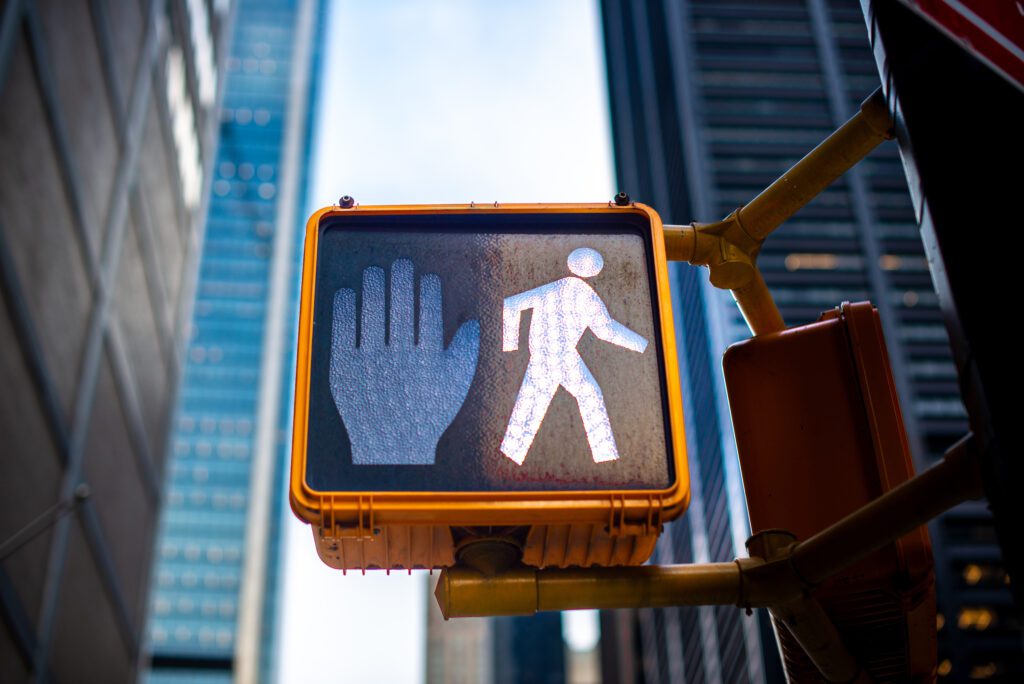Brand safety is no longer a buzzword; it is an essential aspect of modern digital advertising. With the growing complexity of online advertising ecosystems, protecting your brand from being associated with harmful or inappropriate content is critical. Effective brand advertising is crucial for ensuring brand safety and maintaining a positive reputation, as misplaced ads can damage a brand’s reputation, waste ad budgets, and erode consumer trust. In this comprehensive guide, we will define brand safety, discuss why it matters, and provide actionable strategies to help businesses navigate the challenges of maintaining safe and suitable ad placements.
What is Brand Safety?

Defining Brand Safety
At its core, brand safety refers to the measures advertisers take to ensure that their ads do not appear alongside content that could harm their reputation. Brand risk incidents, where ads appear next to inappropriate content, can have a potential negative impact on a brand’s reputation. This includes content such as hate speech, explicit material, fake news, and other potentially offensive or inappropriate media. A practical example of the importance of brand safety can be seen in scenarios where an ad promoting family-friendly content is placed next to a divisive or harmful news story. The impact can be immediate, leading to consumer backlash, lost trust, and damage to the advertiser’s image.
Understanding Brand Suitability
Brand suitability is a crucial aspect of brand safety that involves ensuring that a brand’s advertising is aligned with its values, identity, tone, and other subjective qualities. It is a more nuanced approach to brand safety, as it takes into account the specific needs and goals of each brand. Brand suitability is not just about avoiding inappropriate content, but also about ensuring that the content is relevant and aligns with the brand’s messaging.
In order to achieve brand suitability, brands must define their own guidelines and standards for what is considered suitable content. This can include identifying specific keywords, topics, or themes that are relevant to the brand, as well as establishing a list of approved publishers and websites. Brands must also work closely with their programmatic providers and agencies to ensure that their advertising is being placed in a way that aligns with their brand suitability guidelines.
Why Brand Safety Differs from Brand Suitability
While brand safe practices in digital advertising focus on avoiding overtly harmful content, brand suitability goes one step further by ensuring that ad placements align with a brand’s identity, tone, and audience preferences. For example, while an article about extreme sports may not be harmful, it might not be suitable for a luxury travel brand aiming to project an image of relaxation and exclusivity. The key distinction lies in matching content to the brand’s values and ensuring messaging remains consistent.
Why is Brand Safety Important?
Preserving Brand Reputation
Brand reputation is one of the most valuable assets a company has, and safeguarding a brand’s reputation is crucial in digital advertising. Unsafe ad placements can quickly damage that reputation, leading to long-term consequences. Imagine a healthcare brand’s ad appearing on a website promoting pseudoscientific treatments or misinformation about health. Such an association can harm the credibility of the brand and undermine years of reputation-building efforts.

Maintaining Consumer Trust
In the digital age, consumers are more informed and discerning than ever before. Keeping a brand’s reputation safe by avoiding associations with inappropriate content is crucial in maintaining consumer trust. They expect the brands they support to operate ethically and responsibly. When ads are placed in contexts that appear careless or contradictory to the brand’s values, trust is eroded. Without trust, customer loyalty is difficult to maintain, and in a competitive market, this can be devastating.
Avoiding Financial Waste
Every dollar spent on advertising should contribute to building your brand and reaching the right audience. When ads are placed on unsafe or irrelevant websites, the result is wasted ad spend. Additionally, campaigns that perform poorly due to unsafe placements deliver minimal ROI, making brand safety not only a reputational concern but also a financial one.
Risks of Neglecting Brand Safety
Real-Life Brand Safety Failures
There are numerous high-profile examples of brands suffering the consequences of unsafe ad placements. For instance, major advertisers have faced backlash for having their ads appear alongside extremist or violent videos on platforms like YouTube. The fallout from such incidents often involves public relations crises, strained relationships with consumers, and calls for greater accountability.
Key Risks to Advertisers
Ignoring brand safety exposes advertisers to several risks, including reputational damage, which can tarnish a brand’s image in the eyes of its audience. Digital media professionals perceive brand safety risks as significant, particularly in the context of programmatic advertising. Additionally, unsafe placements result in loss of trust, where consumers question the values of a brand and its commitment to ethical advertising. Finally, brands may experience inefficiencies in ad spend, as ads placed on inappropriate platforms fail to deliver meaningful engagement or conversions.

Common Brand Safety Risks
There are several common brand safety risks that brands must be aware of when advertising online. These include:
- Inappropriate Content: This can include content that is offensive, violent, or explicit, and can damage a brand’s reputation if its advertising is placed alongside it.
- Fake News: Fake news can be used to scam people and fund malicious activities, and can damage a brand’s reputation if its advertising is placed alongside it.
- Extremist Sites: Brands can inadvertently fund extremist sites by placing ads next to their content, which can damage their reputation and values.
- Bot Traffic: Bot traffic can damage a brand’s ROI and conversion metrics, and can also lead to brand safety concerns.
- Malgorithms: Malgorithms refer to ads that are placed next to content that is misaligned with the ad’s message, which can damage a brand’s reputation.
By understanding and addressing these common brand safety risks, brands can better protect their reputation and ensure that their advertising efforts are both effective and aligned with their values.
Building a Brand Safety Strategy and Measures
Step 1: Define Your Brand’s Values and Guidelines
The first step in any effective brand safety strategy is to define what your brand stands for and what it opposes. Understanding the digital marketing definition is crucial here, as it helps explain brand safety within the digital advertising ecosystem, emphasizing the importance of protecting your brand reputation and ensuring ads are appropriately placed. This includes identifying the types of content, platforms, and publishers that align with your values and ensuring that these parameters are clearly communicated to all stakeholders involved in your advertising campaigns.
Step 2: Leverage Advanced Technology
Modern tools like Integral Ad Science and DoubleVerify offer powerful solutions for monitoring ad placements and detecting potential risks. According to digital media professionals surveyed, a significant percentage perceive programmatic advertising as particularly susceptible to brand risk incidents, emphasizing the need for caution in ad placements. These tools analyze contextual factors, measure brand safety scores, and provide real-time reporting, empowering advertisers to make informed decisions about their campaigns.
Step 3: Implement Blacklists and Whitelists
Blacklists and whitelists are critical tools in a brand safety strategy. Blacklists prevent ads from appearing on specific websites or with certain publishers known for hosting harmful content. Whitelists, on the other hand, ensure that ads are displayed only on trusted and pre-approved platforms. Together, these lists create a controlled advertising environment that minimizes risks.

Step 4: Regularly Audit Campaigns
Even with the best tools and protocols, human oversight is essential. Regular audits allow advertisers to review ad placements, assess performance, and identify any deviations from brand safety guidelines. This proactive approach ensures that risks are mitigated before they escalate into larger issues.
Step 5: Develop Crisis Management Protocols
Despite taking preventive measures, it’s impossible to eliminate all risks. A robust crisis management plan ensures that your brand is prepared to respond swiftly and effectively to any safety issues that arise. This might include pausing campaigns, issuing public statements, or working with platforms to remove harmful content.
Contextual Targeting and Brand Safety
What is Contextual Targeting?
Contextual targeting involves analyzing the content of a webpage to determine whether it is a suitable environment for a brand’s ads. Unlike behavioral targeting, which focuses on the user, contextual targeting ensures that the ad placement aligns with the content of the page.
Why Context Matters for Brand Safety
Context is a crucial element of brand safety because even non-harmful content can affect consumer perceptions. For example, an ad for luxury vacations appearing next to a news article about a natural disaster might be perceived as insensitive. Contextual targeting tools like Oracle Contextual Intelligence help brands avoid such mismatches by identifying safe and relevant environments for their ads.

Combating Fraud and Bot Traffic
The Problem with Fraudulent Activity
Fraudulent clicks and bot traffic are growing concerns in digital advertising. These activities inflate metrics, distort performance data, and waste ad budgets. Worse, they can undermine trust in advertising platforms and create challenges for measuring campaign effectiveness.
Solutions for Addressing Fraud
To combat fraud, brands can deploy anti-fraud technologies that detect and block non-human traffic. Additionally, working with reputable programmatic providers and conducting regular performance analyses can help identify unusual patterns and address them promptly. Choosing a reputable programmatic provider is crucial for ensuring brand safety in programmatic advertising, as it helps reduce risks and avoid unsafe content. Tools like Moat Analytics provide insights into fraud detection and ensure that ad spend is directed toward genuine engagement.
The Role of Industry Standards
Key Organizations Supporting Brand Safety
Several organizations play a pivotal role in establishing standards for brand safety. The Global Alliance for Responsible Media (GARM) collaborates with advertisers, platforms, and agencies to promote safer online environments. Similarly, the Brand Safety Institute provides education and resources for navigating brand safety challenges.
Partnering with Trusted Platforms
While platforms like Google and Facebook have implemented brand safety measures, advertisers must remain vigilant. Partnering with platforms that prioritize accountability and transparency is a key step toward maintaining safe and effective campaigns.
Balancing Brand Safety and Performance
Maximizing ROI Without Compromising Safety
A common misconception is that prioritizing brand safety comes at the expense of campaign performance. In reality, brands can achieve both by focusing on high-quality placements that resonate with their target audience. Choosing reputable programmatic providers and direct deals can ensure brand safety while maximizing ROI. Data-driven insights enable advertisers to optimize campaigns while adhering to safety guidelines.

The Importance of Ongoing Monitoring
Digital advertising is a dynamic environment, and risks can emerge unexpectedly. Continuous monitoring and adaptation are essential to ensure that campaigns remain both effective and safe.
Preparing for the Future of Brand Safety
Emerging Risks in Digital Advertising
As technology evolves, new risks such as deepfake videos, misinformation campaigns, and AI-generated content are emerging. Programmatic advertising also presents challenges, making it crucial to select trustworthy demand-side platforms and premium inventory to minimize risks. Staying ahead of these threats requires proactive measures and ongoing investment in safety tools and education.
Investing in Innovation and Education
Brands that prioritize innovation and education are better equipped to navigate the complexities of brand safety. Collaborating with industry experts, adopting new technologies, and fostering a culture of responsibility will be critical for long-term success.
Conclusion
Brand safety is not just a best practice; it is a necessity in today’s digital landscape. By implementing comprehensive safety strategies, leveraging advanced tools, and maintaining a commitment to ethical advertising, brands can protect their reputation, build consumer trust, and achieve sustainable growth. In an ever-changing advertising environment, prioritizing brand safety ensures that your brand remains resilient, respected, and ready to thrive.
A good digital marketing partner can help you navigate the modern do’s and don’ts of brand management, and keep your organization on track with goals without falling into digital pitfalls. Contact Elevato for a free consultation on your brand safety needs.
